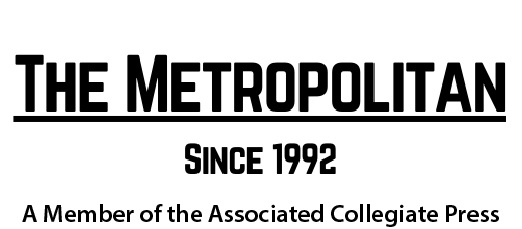
Austin Stanley
Guest Writer
LWhen a crisis such as the AIDS pandemic occurs, it leaves scars on those who experience them. Today, I look at the events of the AIDS crisis in hopes we can take the lessons of the past and apply them to the present.
The first reported cases of the condition that would eventually be called AIDS appeared in 1981, and by the end of the next year, the virus had claimed almost 200 lives. According to the American Foundation for AIDS Research, in 1997, the year I was born, there were 28,688 deaths recorded in the United States due to HIV/AIDS, bringing the nation’s total recorded death toll to 390,692. The same report places our death toll at 529,113 lives by 2004.
The AIDS epidemic is one of the worst health crises in the history of the United States and the neglectful response of President Ronald Reagan made it even worse. The very first time Ronald Reagan said the word AIDS out loud in public was during his opening address at the third International Conference on AIDS in 1987—a full six years after the crisis began. By this time, 40,000 Americans had died of the virus. Today, it is estimated that over one million people in the U.S. are surviving with HIV/AIDS.
To honor and remember those who passed, the NAMES Project started the AIDS Memorial Quilt the same year Ronald Reagan gave that address. But when humanity creates these memorials, to whom are we purposely trying to remind? The people who lived through the trauma are not soon likely to forget it. No, people build memorials so they can go to the people who ignored their stories. They can point to something significant and say “this is what happened to me.”
The quilt was born from the mind of gay rights activist Cleve Jones in 1985 and was inspired by taping the names of San Francisco AIDS victims to the San Francisco Federal Building. Since then, the AIDS Memorial Quilt has become one of the most important pieces of collaborative art of the 20th century. In 1987, the NAMES Project was officially founded and by October 11, 1,920 panels were displayed on the National Mall, each one representing someone who had died due to AIDS. The project took root in the minds of Americans, and now the quilt bears the names of nearly 50,000 lost lives.
Why continue building this memorial even larger each year? There are multiple answers to this question, but my personal belief is that the quilt is a message for the oppressors—for the government who ignored the deaths of its citizens because they were undesirables. I think Cleve Jones would also agree as he claimed, “If it raised a single question, it was, what are we going to do about it? That was the challenge we laid at the national doorstep.”
In her essay “Repeated Remembrance: Commemorating The AIDS Quilt and Resuscitating the Mourned Subject,” Erin J. Rand, the assistant professor of communication at California State University, talks about friction between those who wished to mourn those who have fallen to AIDS and those who wished to push their anger into action. She comes to the conclusion that militant activism and mourning can and should coexist. I would go a step further and say that to mourn in a blatantly public way is a militant form of activism.
By ignoring the AIDS crisis, it is my opinion that Ronald Reagan was attempting to abuse the LGBT community using both lies and denial of reality in order to destabilize the lives of the victims.
All forms of public protest coming from the LGBT community are an explicit reaction to this abuse. I would assert that those people dying of AIDS on the capitol steps and those people displaying the names of the dead on one of the largest art installations ever are both equally revolutionary. Both acts of protest force those choosing to ignore to either step over the dead literally or metaphorically to carry on with their business.
The die-ins have ended but still people need to be reminded. Our government in the past has failed to respond to a crisis, making it much worse than it could have been and the quilt is physical evidence of that fact. It serves as a marker of past failures that can direct us in the future or the present as the case may be. People die during novel disease outbreaks but we know that there are steps that can be taken to mitigate those deaths. We know what it looks like when those in power refuse to take those steps.
The AIDS Memorial Quilt is a unique memorial in that, in addition to its special meaning, the quilt itself changes over time. Every time the quilt visits a new city, family or friends of new deceased bring lovingly made sections and add them to the names. On top of more panels being constantly added, things that were left out of the quilt are now saving lives.
According to Wren Sanders in their article for Them., Gert McMullin, the chief coordinator for the AIDS Memorial Quilt, is using leftover quilt fabric to make protective facemasks and donating them to Bay Area Community Services. The AIDS Memorial Quilt was supposed to reappear in its home city, San Francisco, but due to the outbreak of COVID-19, the display was cancelled. “I’m not used to sitting around and not helping people,” said McMullin in People, so she is putting the remnants of one memorial commemorating an outbreak to use in protecting people from another.
The AIDS Memorial Quilt is likely the most versatile monument ever conceived and created. As a monument to the sins of a government, it stands as a reminder; as a gravestone for the nation to grieve over the forgotten, it goes where it is needed. The AIDS Memorial Quilt is something we can touch, something we can wrap ourselves in and feel the weight of the past. The 54 tons of fabric represents half a million dead. Many having died alone, now stitched together forever.
When I started this piece, my interests in the trauma the community faces were very personal. When my brother died in 2017, we planted a tree by the river that took him. I chose this topic partially in the hopes that I might find some answers in how to heal properly. Since the time I started this, the entire world has experienced a shared trauma the likes of which has not been seen in a century. These new developments have unraveled new questions, the answers to which do not yet exist.
Will we go back to normal? Should we go back to normal? When we get through this, what pieces will be left to fit back together? The question foremost in my mind is what memorials will we build for this pandemic? What physical objects will we put together so that when forces try to tell us it was not so bad, we can say to them “yes it was”? What monuments will we craft so that when future generations threaten to forget, we can point at them and say “this is what happened to us”?

